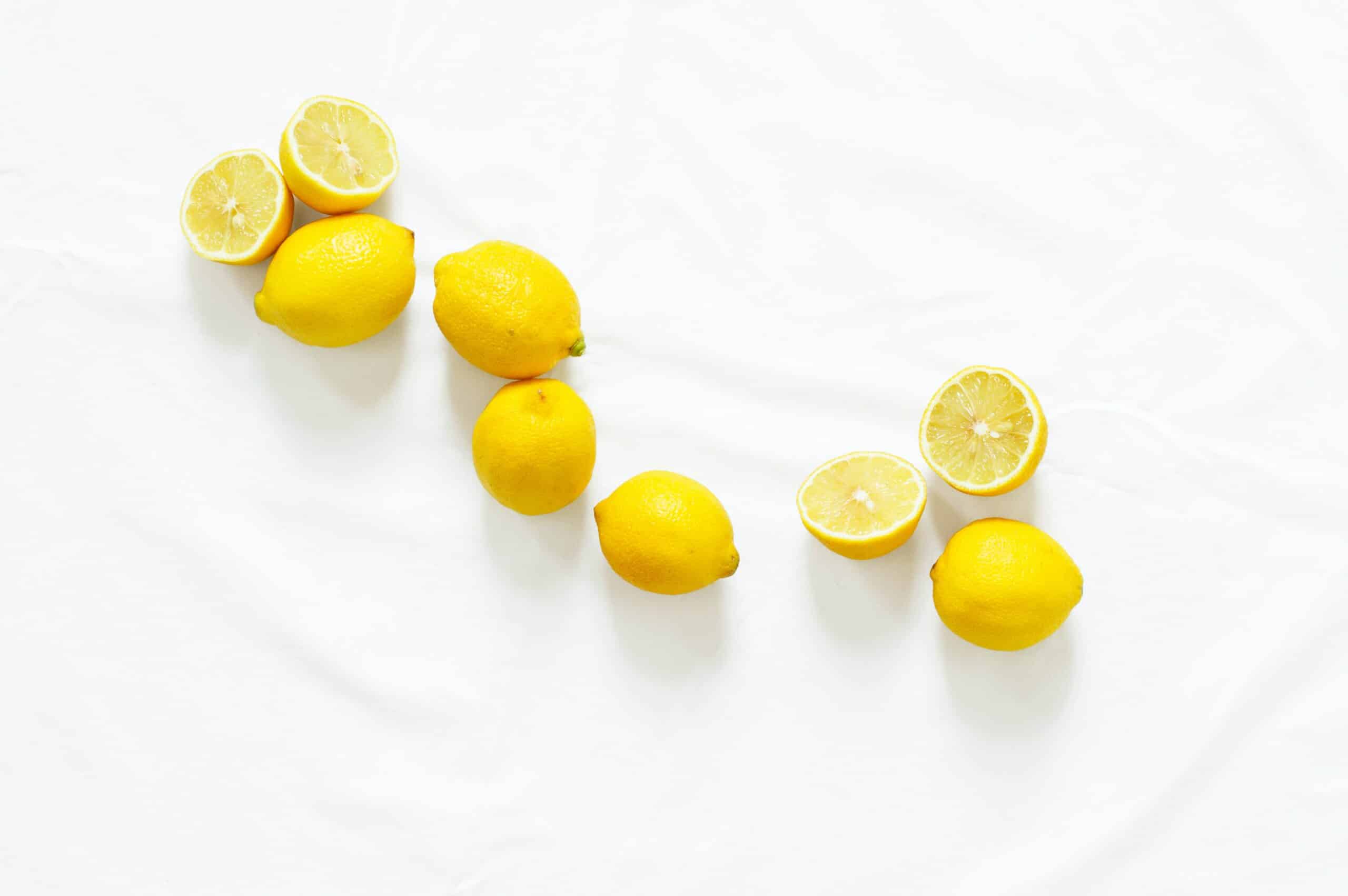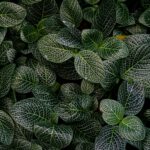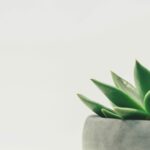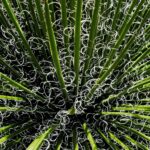If you’re looking for a unique and easy to care for houseplant, look no further than the Schefflera! This beautiful and vibrant plant is sure to bring life to any home. It’s known for its exotic foliage that resembles an umbrella and adds a tropical feel to any indoor space. Plus, it’s easy to grow and takes minimal maintenance. Read on to find out more about how to successfully cultivate this popular houseplant.
Second Paragraph: The Schefflera is native to Taiwan and Australia, but has become one of the most popular houseplants around the world. Its lush green leaves add an elegant touch of color to any indoor space, while its slow growth makes it ideal for novice gardeners or busy individuals who don’t have much time for upkeep. With proper care, this plant can thrive in even the smallest of spaces like apartments or offices!
Third Paragraph: Caring for a Schefflera isn’t difficult as long as you provide it with adequate light, water, humidity, and fertilizer. If you follow these simple steps, your plant will be healthy and happy in no time! Keep reading for all the tips and tricks you need to know about growing this beautiful houseplant.
Identifying A Schefflera Plant
The schefflera plant is like a colorful umbrella made of leaves, inviting anyone to come and marvel at its beauty. But before you can fully appreciate it, you need to make sure that you are indeed looking at a schefflera plant. Identifying this particular species is the first step towards growing and caring for it.
Schefflera plants are characterized by their glossy green foliage and stems with peculiarly-shaped leaflets. Generally, they have seven to nine leaflets that fan out in a symmetrical pattern from each stem node. Depending on the variety, these leaflets may be oval or lance-shaped, and some may even have attractive splotches or variegations of yellow or white. The stems are usually thick and woody with a reddish-brown hue.
When it comes to size, scheffleras range from small potted plants to large trees up to 10 feet in height. They can also be trained as bonsai specimens if desired. Knowing how tall your schefflera will eventually grow helps determine where it should be placed in your home or garden. With proper care, this unique plant will add an exotic touch to any space for years to come!
Understanding Light Requirements
When it comes to understanding light needs for a Schefflera plant, the type of lighting needed is going to depend on where the plant is located. If you have your Schefflera in a greenhouse or indoors near a window, then it’s important to provide bright but indirect light. This can be achieved by placing the plant in an east-facing window or adding sheer curtains over south-or west-facing windows. For outdoor plants, they will need some direct sunlight for about 4 hours a day, preferably in the morning.
Scheffleras don’t do well with low light conditions and may lose their leaves if kept in such areas. If your Schefflera isn’t getting enough light, you might notice droopy leaves as well as yellowing and leaf loss. You can try supplementing natural sunlight with artificial lighting such as grow lights if your plant isn’t getting enough sun indoors.
When it comes to keeping your Schefflera healthy and vibrant, proper lighting is key. Too much direct sunlight can cause the leaves to burn while too little light will prevent the plant from getting what it needs to thrive. By finding the right balance of indirect and direct sunlight for your particular environment, you’ll be able to keep your Schefflera happy for many years to come. With that taken care of, it’s time to look at knowing when and how often you should water your Schefflera next.
Knowing When & How To Water
Did you know that Schefflera plants can lose up to 90% of their water content in as little as one hour? That’s why it’s important to understand the watering needs of these plants. Knowing when and how much to water your Schefflera is key for keeping them happy and healthy.
When it comes to watering, the frequency and amount depend on the light intensity, temperature, and humidity within your home. Generally speaking, during the summer months your Schefflera should be watered every 7-10 days and during winter months once every 10-14 days. To check if a plant needs water, stick your finger in the soil up to the first knuckle – if it’s still damp then wait until it dries out before watering again.
You want to give your Schefflera a good soak so that water reaches all the way down into its roots. It’s also important not to overwater as this can cause root rot or leaf spot diseases. If you’re unsure about how much water is enough for your plant, simply use a moisture meter (available at most garden stores) or ask someone at your local nursery for advice.
The next step is providing fertilizer needs for your Schefflera; this will help keep it happy and healthy for years to come!
Providing Fertilizer Needs
The schefflera is a symbol of balance, resilience and strength. It may appear delicate, but it has an impressive ability to thrive even in less than ideal conditions. Fertilizer is one way to help the umbrella plant reach its full potential in terms of growth and bloom production.
Providing fertilizer needs for a schefflera usually means using a balanced liquid fertilizer that’s diluted to half-strength and applied every two to four weeks during the growing season. The best time to fertilize is when the plant is actively growing, which varies depending on the species, but generally occurs between spring and autumn. In winter months when the plant isn’t actively growing, you don’t need to fertilize at all.
When applying fertilizer, make sure not to overdo it—too much can cause damage or even kill your plant. It’s important to follow the instructions on the product label as closely as possible and monitor how your plant responds after application so you can adjust accordingly if needed. With proper care and attention, your schefflera will be reward you with lush foliage and vibrant blooms for years to come.
Next up: controlling temperature & humidity for optimal health of your schefflera plants.
Controlling Temperature & Humidity
Maintaining a comfortable climate for your Schefflera plant is essential for its well-being. With the right temperature and humidity level, you can help your plant feel at home in its new environment.
Taking care of the temperature and humidity of your Schefflera’s environment can be a challenge, but with some effort, it’s possible to keep both levels pleasant. It’s important to remember that temperatures should not drop below 65 degrees Fahrenheit and should never exceed 86 degrees Fahrenheit. You can use a humidifier or simply mist the leaves regularly to maintain an ideal level of humidity.
Finally, if you’re able to place your Schefflera in an area where it can get plenty of indirect light and away from drafts and air vents, then you’ll be giving it the best chance at a healthy life. Now that you know how to control temperature and humidity for your plant, let’s look into dealing with pests and diseases.
Dealing With Pests & Diseases
Dealing with pests and diseases is an important part of caring for a Schefflera plant. There are several ways to go about it, depending on the type of pest or disease. For example, if you notice aphids or mealybugs, remove them by hand or with an insecticidal soap solution. Spider mites can be eliminated with a miticide spray. Fungal problems like root rot can be treated with a fungicide.
It’s also important to pay attention to the overall health of your plant in order to prevent pests and diseases from occurring in the first place. Make sure your Schefflera is placed in an area that has bright, indirect sunlight, and keep it well-watered without overwatering. Prune off any damaged or diseased leaves as soon as you spot them.
Finally, it’s best to act quickly if you notice any signs of pests or diseases on your Schefflera plant. If left untreated, they can cause serious damage and even kill the plant. With the right preventive measures and treatments though, you can help keep your Schefflera healthy and thriving for years to come. Moving forward, let’s look at how to properly prune and repot your Schefflera plants for optimal growth.
Pruning & Repotting
“A stitch in time saves nine” – this age-old proverb applies to pruning and repotting a Schefflera plant. Doing so regularly will keep the plant healthy, strong, and attractive. When it comes to pruning, it’s best to use sharp scissors or shears and always prune at a 45-degree angle. This will prevent damage to the leaves and stems while promoting better airflow throughout the plant. It’s important to cut off any dead or diseased branches as soon as they’re noticed. Additionally, removing any leaves that have yellowed or browned will help keep the plant healthy and looking its best. Pruning should be done in the spring or summer months when new growth is appearing on the plant. As for repotting, it should be done every two to three years since Schefflera plants grow quickly. When doing so, make sure you use fresh soil that’s well-draining with plenty of organic matter added for nutrients. Repotting should also be done during spring or summer months when new growth is appearing on the Schefflera plant for optimal results. Now that we’ve discussed pruning and repotting a Schefflera plant, let’s move on to propagating one!
Propagating A Schefflera Plant
Have you ever wanted to expand your collection of beautiful Schefflera plants? There are a few different methods of propagating a Schefflera plant, and doing so is easier than you might think! Let’s explore the different ways to multiply your Schefflera plants.
The most popular method of propagating a Schefflera plant is by stem cuttings. All you need is some rooting hormone, potting soil, and at least one healthy stem cutting with some leaves attached. Prepare the potting soil in a container, then dip the stem cutting into the rooting hormone before inserting it into the soil. With proper care such as regular misting and bright indirect light, new roots will start forming in about two weeks.
Another way to propagate a Schefflera plant is through division. If you have an established plant with multiple stems that have grown from one root system, you can divide the stems apart and replant them into separate pots. This method doesn’t require any rooting hormone or special preparation; simply make sure each division has its own root system before replanting it!
With these simple steps and proper care, your collection of Schefflera plants will soon be flourishing! Now let’s move on to how you can use these beautiful plants to decorate your home.
Decorating With Schefflera
Scheffleras are like rainbows for your home! With their vibrant leaves and symmetrical shape, these tropical plants instantly add color and life to any room. And unlike other houseplants, they’re incredibly easy to care for – making them ideal for busy homeowners. Decorating with schefflera is the perfect way to give your space an instant upgrade.
When decorating with schefflera, start by finding a spot that has indirect sunlight and plenty of humidity. If you don’t have enough natural light in your home, you can also use artificial lighting or place the plant near a window. You should also choose a potting soil mix that is well-draining and full of organic matter. Finally, pick a container that’s big enough to accommodate the size of the plant but not too big – otherwise it can be difficult to move around.
For an extra pop of color, consider adding some decorative rocks or moss around the base of the pot. This will help keep moisture in the soil and make it look even more beautiful! Plus, if you want to switch up your look from time to time, you can easily remove these decorations without damaging your schefflera. With its gorgeous foliage and ease of care, it’s no wonder that this gorgeous tropical plant is such a popular choice for interior decor!
Decorating with schefflera doesn’t have to be complicated – just follow these simple steps for stunning results that will last for years to come! Now let’s move on to how best to display your new vibrant addition.
Displaying A Schefflera Plant
Displaying a schefflera plant can be done in many ways. With its attractive foliage and size, it’s an ideal choice for any home decor. When choosing how to display your plant, consider the height and the spot in which you want to place it. It can be used as a tabletop decoration or placed on a floor stand for a more eye-catching display.
For larger plants, make sure to select an area with adequate light, ventilation and temperature control for best results. You may also want to use proper pruning techniques if the plant has become too large or unruly. You’ll also need to water regularly and fertilize every few months to keep your plant healthy and vibrant looking.
An umbrella plant can also be displayed in hanging baskets or wall planters. Hanging baskets are a great way to add height and interest to a wall or corner of the room without taking up much space. Wall planters are also ideal if you don’t have the room for full-size potted plants but still want to enjoy the beauty of having one in your home. Both of these options enable you to easily move your plant around if needed, making them especially convenient if you’re looking for something that’s easy to maintain.
From displaying it indoors on stands or tables, hanging baskets, or wall planters, there are plenty of ways that you can show off this beautiful houseplant in your home decor – no matter what size it is!
Planting A Schefflera Outdoors
Planting a schefflera outdoors is possible, but it must be done carefully. This tropical plant thrives in warmer climates and needs lots of bright, indirect sunlight. It’s important to select a spot that gets some shade throughout the day and has well-draining soil.
When you’re ready to plant, start by loosening the soil and adding organic matter like compost or peat moss. Dig a hole deep enough for the root ball of the schefflera to fit in comfortably. Place the root ball into the hole and fill it in with soil before gently pressing down around it with your hands. Water thoroughly after planting and fertilize every three months during spring and summer.
Finally, keep an eye on your schefflera to make sure it’s getting enough water and isn’t being overrun by pests or diseases. With proper care and attention, this majestic plant will thrive outdoors! Moving forward, choosing the right soil is essential for successful outdoor growth.
Choosing The Right Soil
Believe it or not, choosing the right soil is actually one of the most important steps when it comes to growing and caring for a Schefflera plant. You’d think that once you’ve planted it, your job is done–but nope! You’ve still got some work to do.
Irony of it all aside, if you want your Schefflera to thrive, here’s what you need to know. The soil should be well-draining, light and airy. A good mix would be two parts potting soil mixed with one part coarse sand and one part peat moss. If you can’t find this exact mix, don’t worry too much; any soil designed for houseplants will work just fine.
Finally, make sure the soil is damp but not soggy – otherwise your Schefflera might end up suffering from root rot or other diseases caused by moisture retention in the roots. With the right care and attention (and soil!) your Schefflera will be happily growing in no time at all – now let’s move on to protecting it from winter weather…
Protecting From Winter Weather
The winter chill brings with it a feeling of stillness and subdued colors, a reminder that nature takes its time to prepare for the new season. But there’s one plant that needs special attention during the cold weather: the Schefflera or Umbrella Plant. This stunning greenery requires extra protection from winter weather in order to be able to thrive during the colder months.
One of the most important things when it comes to protecting your Schefflera from winter weather is making sure it gets enough light. Place your plant near a sunny window, as even filtered sunlight can help keep it healthy throughout the colder months. Additionally, you’ll want to make sure that your plant isn’t exposed to temperatures below 50°F (10°C). If temperatures drop lower than this, move your Schefflera indoors and place it in an area with higher humidity, such as near a humidifier or bathroom.
Finally, providing your Schefflera with adequate water is also key in keeping it safe from winter weather. Make sure to check soil moisture regularly and water when needed while avoiding overwatering. By following these simple steps you can ensure that your Umbrella Plant will stay healthy and beautiful through every season!
Tips For Growing Schefflera
Growing schefflera, or umbrella plants, can be a rewarding experience. It’s important to understand the optimal conditions and care instructions for these plants in order to ensure that they thrive. Here are some tips for growing schefflera inside your home.
Be sure to provide plenty of bright, indirect light for your schefflera. Natural sunlight is best, but artificial lighting can also be used if necessary. Keep the soil evenly moist by checking it regularly with your finger and water it when it begins to dry out. Fertilize with a balanced liquid fertilizer once every two weeks during the growing season and reduce to once a month during the winter months.
Scheffleras prefer warm humid environments so use a humidity tray or mist regularly to increase humidity levels when needed. Repotting may be necessary every couple of years as the plant grows larger; just make sure you use a pot that has adequate drainage. With proper attention and care, you should have healthy and happy schefflera plants!
It’s also important to be aware of potential issues that may arise while growing this plant indoors. Troubleshooting common problems such as pest infestations, yellowing leaves, wilting, and more will help keep your schefflera healthy in its new home.
Troubleshooting Common Problems
When it comes to growing schefflera, some issues can arise that may throw a wrench into an otherwise successful process. Luckily, these problems can often be solved with a bit of knowledge and the right methodologies. In this section, we’ll discuss troubleshooting common problems associated with growing schefflera plants.
The most common problem that arises when it comes to caring for schefflera plants is root rot. Root rot results from overwatering or poor drainage and can cause wilting leaves and yellowing foliage. The best way to prevent root rot is to water sparingly and make sure the plant is in well-draining soil. If root rot has already occurred, repotting the plant in fresh potting mix may help save it.
Another issue with schefflera plants is spider mites, which are tiny pests that feed on the sap of the plant’s leaves and can cause discoloration or even death if left unchecked. To get rid of spider mites, it’s best to wash off their webs with a strong spray of water and then apply insecticidal soap or neem oil as needed. Be sure to also keep an eye out for signs of infestation so you can catch them early before they do too much damage.
Overall, ensuring proper care for your schefflera plants will help you avoid many of these common issues –but if problems arise, understanding how to properly address them will set you up for success in keeping your plant healthy and happy!
Frequently Asked Questions
How Often Should I Mist My Schefflera Plant?
When it comes to caring for a schefflera, or umbrella plant, one of the main things to consider is misting. Misting is important for several reasons: it helps keep plants hydrated and prevents spider mites from taking over. However, you don’t want to overdo it — too much moisture can cause rot and other issues. So, how often should you mist your schefflera plant?
The answer depends on several factors. First off, you’ll need to assess your environment — do you live in an area with high humidity? If so, then misting twice a week may be enough. But if you’re in a dry climate, then misting daily might be necessary. Additionally, different varieties of schefflera may have different needs when it comes to misting frequency. Be sure to look up the specifics of your particular kind before settling on a schedule.
In addition to environmental conditions and variety type, you’ll also want to take into account the size and location of your plant. Larger plants that are placed further away from any air vents will need more frequent mistings than smaller plants located closer. With all these variables taken into consideration, determining how often to mist your schefflera can become quite complicated! Ultimately though, it’s essential for keeping your plant healthy — so take the time to figure out what works best for both you and your beloved umbrella plant.
What Type Of Pot Should I Use For A Schefflera Plant?
When it comes to potting your Schefflera plant, the possibilities are virtually endless. Imagine a vibrant pop of green against a terracotta planter or a pale pastel pot that stands out in contrast against the deep, dark leaves. The choice is up to you and your creative flair.
No matter what kind of container you choose, there are a few key things to remember when picking the perfect home for your Schefflera plant. First, choose a pot with drainage holes in the bottom; this will help prevent root rot and ensure that excess water can escape from the soil. Additionally, pick a pot that’s slightly larger than your current plant; this will give it plenty of room to spread its roots and thrive.
Finally, make sure your pot is light and airy enough for your plant to move around as it grows and develops. Choose something that won’t weigh down the delicate branches or stunt its growth—you want it to have plenty of space for its umbrella-like foliage to flourish! With these tips in mind, you’ll be ready to find the perfect place for your Schefflera plant!
Can I Propagate A Schefflera Plant From Cuttings?
Propagating a schefflera plant from cuttings is a great way to increase the number of plants in your home. It’s an easy and cost-effective method that doesn’t require any special tools or materials; all you need are a few healthy stems from an existing plant.
To propagate a schefflera, first remove a stem from the parent plant, making sure it has at least two nodes (the point where leaves grow out). Cut the stem just below the bottom node and dip it in rooting hormone, then place it in moist potting soil. Make sure to keep the soil damp, but not waterlogged; overwatering can cause root rot. Place the pot in indirect sunlight, and don’t forget to mist the leaves regularly.
With proper care and patience, roots should begin to form within several weeks. Once they’re established, you can transfer your new baby schefflera into its own container. Congratulations on your new addition!
How Do I Know When My Schefflera Plant Needs Repotting?
Repotting a schefflera plant is like going on an exploration: you never know what you will find. It is important to know when your plant needs repotting, as this could be the difference between having a thriving and healthy plant, or one that is stunted and struggling with its growth. Fortunately, there are a few tell-tale signs you can look out for which will indicate if it’s time to repot your schefflera.
The first sign to look out for is whether there are roots visible at the bottom of the pot. When this occurs, it means the roots have started to become cramped in their current pot and they need more space to grow and thrive. Another sign is if the leaves are wilting or yellowing, as this could mean the soil has become too compacted and there isn’t enough airflow around the soil or drainage holes. Lastly, if your plant has become top-heavy due to overgrowth, it’s likely time to move it into a bigger pot – one with a wider base – so that it can support its weight better.
If any of these signs appear, then you should take action sooner rather than later by repotting your schefflera into a larger pot with fresh soil and adequate drainage at the bottom. Don’t forget to water regularly after repotting and keep an eye out for any further signs of stress so that you can address them quickly before they cause serious damage to your beloved umbrella plant!
Should I Use A Special Fertilizer For My Schefflera Plant?
When it comes to caring for a schefflera plant, fertilizing is an important step. Using the right fertilizer can help your plant thrive and stay healthy. But with so many different types of fertilizers available, it can be hard to know which one is best for your schefflera plant.
A good rule of thumb is to use a balanced fertilizer that has equal parts nitrogen, phosphorus, and potassium. This will ensure that the plant gets all the essential nutrients it needs. There are also specialized fertilizers available specifically designed for schefflera plants, which can be helpful if you’re looking for more targeted nutrition. However, these aren’t necessary and may not provide any additional benefit over a general-purpose fertilizer mix.
It’s important to note that over-fertilizing can cause damage to your schefflera plant. It’s best to stick to the instructions on the fertilizer packaging and only apply it at recommended intervals. Additionally, make sure that you flush out any excess fertilizer from the soil after application to avoid build up in the potting mix. With proper care and attention, using the right type of fertilizer will help keep your schefflera healthy and happy!
Conclusion
When it comes to growing and caring for a Schefflera plant, there is no one-size-fits-all answer. However, by following the tips discussed in this article, you can be sure that your Schefflera will thrive with minimal effort. Whether you mist it regularly, use a pot with good drainage, propagate from cuttings, or repot it when necessary; all these factors can help keep your Schefflera healthy and happy. And don’t forget to fertilize it every few weeks – like a well-oiled machine, this will ensure that your Schefflera stays in tip-top shape!
Caring for a Schefflera plant is like riding a bike: once you get the hang of it, it’s surprisingly simple and enjoyable. In the same way that you take pride in seeing your Schefflera bloom and flourish over time, the same sense of satisfaction will come from mastering the art of potting and propagation. So get ready to put on your green thumb and start gardening! Like they say: “A journey of a thousand miles begins with one small step.”





























